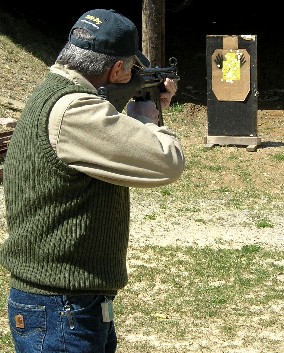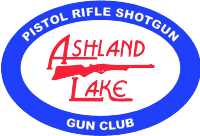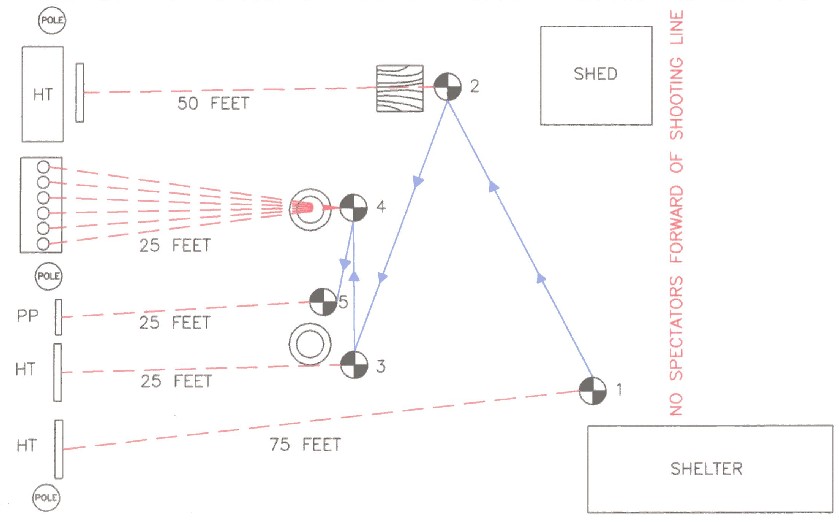 |
|
|
Sub-machinegun Clinic AgendaSign in / RegistrationAttendees please register and sign release statements.Definitions: (ATF definition) Machine gun- Any weapon which shoots, is designed to shoot or can be readily restored to shoot, automatically more than one shot, without manually reloading, by a single function of the trigger. The term shall include the frame or receiver of such weapon, any part designed and intended solely and exclusively, or combination of parts designed and intended for use in converting a weapon into a machine gun, and any combination of parts from which a machine gun can be assembled if such parts are in the possession or under the control of a person. Machine gun- Any weapon which shoots, is designed to shoot or can be readily restored to shoot, automatically more than one shot, without manually reloading, by a single function of the trigger. The term shall include the frame or receiver of such weapon, any part designed and intended solely and exclusively, or combination of parts designed and intended for use in converting a weapon into a machine gun, and any combination of parts from which a machine gun can be assembled if such parts are in the possession or under the control of a person.Submachine gun- As above, with the firearm designed to shoot pistol ammunition. Suppressor- Any device for silencing, muffling or diminishing the report of portable firearm, including any combination of parts designed or redesigned and intended for use in assembling or fabricating a firearm silencer or muffler, and any part intended for use in such assembly or fabrication. Firearms operation/Design:Open Bolt- simplified slam fire construction, typically utilizing a fixed firing pin. Bolt remains rearwardafter each shot. Safety is generally incorporated into bolt slot of receiver. * Advantages: cost and ease of manufacturing, reliability. * Disadvantages: reduced accuracy Closed Bolt- more accurate / more costly construction. Bolt is fully locked prior to firing pin activation. Bolt is closed (locked in breech) after each shot. Safety is generally incorporated into the trigger group. * Advantages: improved accuracy over closed bolt design * Disadvantages: costly construction and complexity over open bolt design. More susceptible to component breakage/maintenance. PrimersBerdan, (common in Europe, designed by American)Boxer, (common among NATO countries, designed by British) AmmunitionMachine gun ammunition may have harder primers and hotter loads and should not be used inappropriately.Factory or Ball ammunition should be used. The use of hollow point bullets is not recommended in submachine guns. Certain hollow points should never be used in any suppressor to avoid damage and/or injury. Re-loadsAbsolutely a no-no. A squib load traveling far enough down the barrel will result in a burst barrel from the subsequent shot. This will result in damage to the firearm, and potentially fatal injury to the shooter. Remember, the firearm has no knowledge that a previous shot fire has not cleared the barrel. On full auto, you do not have ample reaction time to ?hold up? on a subsequent shot following a squib loadOperationsSafetyA firearm shall be considered to be "safe" when in the following condition:1. Free of magazine 2. Bolt is locked rearward, (when possible) 3. Safety selector on "SAFE" 4. Range officer inspects breech to be clear. All spectators/non-shooters are to be positioned well behind the shooter as directed by the range officer/s. If you are not shooting, your firearm is to be ?tabled? and clear of a magazine. All shooters are required to wear safety /shooting glasses and hearing protection is encouraged. Stance, (basic)1. Legs are spread forward towards target in comfortable stance.2. Firearm is shouldered. 3. Elbow of weak arm is pointed down and directly vertical of forward foot. 4. Knees are slightly bent. 5. Center of gravity is over forward foot. Malfunctions and stoppages1. Position one stoppage-Failure to Fire2. Position Two Stoppage- Failure to Eject, (stove pipe) 3. Position Three Stoppage- Failure to Feed 4. Position Four-Failure to Go into Battery Position One Stoppage:Failure to FireSymptom:When the trigger is pressed, the hammer falls striking the foring pin but the firearm does not fire. Cause: Position One Stoppages are caused by improper seating of the magazine, cartridges dragging inside of the magazine, or a dud primer. Correction: 1. Rap bottom of magazine with heel of weak hand to insure that it is properly seated. 2. Cycle weapon and allow the bolt to slam home. 3. Try to fire weapon again. 4. If weapon still does not fire, remove magazine and replace it with a fresh one then repeat steps 1, 2 & 3 Position Two Stoppage:Failure to Eject (Stovepipe)Symptom:Cartridge case is caught in ejection port Cause: Position Two Stoppages are normally caused by squib cartridges (under powered) or by a broken ejector/extractor. Correction: 1. Retract bolt all the way to the rear, relieving pressure from stuck case. 2. Simultaneously flip rifle to the right to throw case clear of ejection port. 3. Release bolt to chamber a fresh cartridge. 4. Fire weapon. Position Three Stoppage:Failure to FeedSymptom: Cartridge is stuck in the feedway, preventing the bolt from moving into battery. Commonly called a "double-feed".Cause: Position Three Stoppages are typically caused by two or more cartridges feeding simultaneously from the magazine or by the extractor failing to extract the fired case, with the bolt feeding a new cartridge in behind it. It is important to lock the bolt open before anything else is done. Failure to do so will only make the problem worse Correction: 1. Lock bolt open. 2. Remove magazine. Discard it. 3. Work bolt 2-3 times to insure action is clear. 4. Insert fresh magazine, rap bottom of magazine to insure seating. 5. Cycle action once to chamber a new cartridge. 6. Fire weapon. Position Four Stoppage:Failure to go into BatterySymptom: Bolt is nearly closed, but is not locked in place.Cause: Position Four Stoppages are caused by dirty ammunition, chamber fouling or oversized cases. Correction: Sharply strike charging handle with heel of strong hand. If charging handle is separate from bolt, push forward-assist (M-16) or push bolt into battery with fingers. Submachine Guns Malfunction DrillsPosition One Stoppage (Failure to Fire):1. Rap bottom of magazine to insure seating.2. Pull actuator to rear. 3. Fire weapon. Position Two Stoppage (Failure to Eject):1. Pull bolt to rear, re-cocking it.2. Simultaneously flip weapon to the right to throw case clear of ejection port. 3. Fire weapon. Position Three Stoppage (Failure to Feed):1. Cycle bolt to rear, lock.2. Remove magazine. Discard it. 3. Press trigger to drop bolt on chambered cartridge. Round will fire or extractor will grasp spent case so it can be removed. 4. Re-cock weapon if needed. 5. Insert a fresh magazine. Rap bottom of magazine to fully seat. 6. Fire Weapon. Position Four Stoppage (Failure to go into Battery):In an open-bolt weapon, this type of stoppage will usually detonate the cartridge whether it is chambered or not as the firing pin is fixed. This will cause a position 2 or 3 stoppage, clear as described in previous text.As can be seen, these four drills are the simplest and quickest means to clear a malfunction and the firearm back in service. Practice is the answer to making clearance drills reflexive. Use only inert cartridges at home to avoid an accidental discharge. Although malfunctions can be cleared readily, there are things you can do to lessen your chance of having one in the first place: 1. Use only factory/ball ammunition for serious work. Hand-loads and exotic bullet shapes (i.e. hollow-points) are the biggest single cause of malfunctions in auto-loaders. The problem is more pronounced in sub-guns than rifles. 2. Periodically check your magazines for damage (dents, cracks, bent or sprung feed lips and weak springs). 3. Remove all burrs from the feed-way, bolt channel, etc. Burrs can hang up ammunition or slow down the bolt. 4. Keep weapon reasonably clean. This is not a big problem, but don't let fouling build up until the gun won?t work. 5. Lubricate properly. Except in a desert environment, a clean dry weapon will malfunction more than a dirty lubed one. Metal moving parts need lubrication to move freely. 6. Keep the weapon simple. Any gadgets (brass catchers, scope mounts) tacked on, covering or blocking the ejector port is an invitation to disaster. 7. Know your weapon. The more familiar you are with it, the lesser the chance you will cause a malfunction in handling the weapon. 8. Lastly, remember that most military firearms made in the last five decades are as reliable as possible and are deserving of your confidence. Still, knowing what to do if a malfunction does occur can only add to that confidence and just may give you the winning edge.
|
||||||
 |
  |
|
